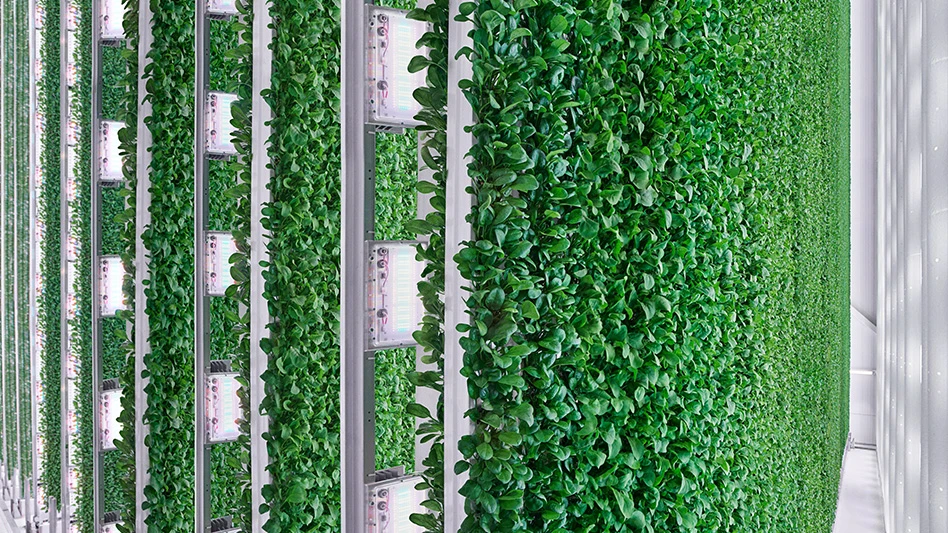
Photo: Business Wire
Plenty, per a press release, has announced the opening of its indoor vertical farm in Compton, California.
The farm, featuring Plenty's 3D vertical architecture, is designed to grow up to 4.5 million pounds of leafy greens.
“After investing nearly a decade into research and development, Plenty has cracked the code on a scalable platform for indoor farming,” said Plenty CEO Arama Kukutai. “With Plenty’s first commercial farm, we’re proving that our uniquely vertical indoor farms can deliver a reliable, year-round supply of fresh produce with positive unit economics. This is the first step in putting indoor-grown produce on a path to becoming a meaningful part of the global food supply, and we’re honored to be taking that step in our home state of California with the community of Compton.”
Plenty says the farm will grow four varieties of greens: Baby Arugula, Baby Kale, Crispy Lettuce and Curly Baby Spinach. They say the spinach is the first vertically grown, pesticide-free spinach in the United States.
“The Plenty Compton Farm is bringing field-scale farming back to Compton and introducing a new generation of our community to careers in agriculture – more than 30% of the farm’s hires came from Compton,” said Mayor Emma Sharif. “Plenty’s farm is a model for how we can increase access to fresh, locally grown food for urban populations, while supporting cities’ economic development.”
“California agriculture is at the forefront of efforts to ensure climate-resilient food systems through the adoption of innovative technologies and practices,” said Secretary Karen Ross, California Department of Food and Agriculture. “Plenty’s new indoor vertical farm is an example of those efforts and provides an important additional method to grow fresh produce in urban centers, closer to consumers, reducing the draw on our natural resources.”
Latest from Produce Grower
- TIPA Compostable Packaging acquires paper-based packaging company SEALPAP
- Divert, Inc. and General Produce partner to transform non-donatable food into Renewable Energy, Soil Amendment
- [WATCH] Sustainability through the value chain
- Growing leadership
- In control
- The Growth Industry Episode 8: From NFL guard to expert gardener with Chuck Hutchison
- 2025 in review
- WUR extends Gerben Messelink’s professorship in biological pest control in partnership with Biobest and Interpolis





